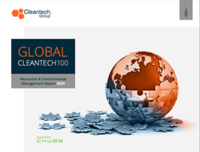Understanding Financed Emissions: A New Priority for Sustainable Investment
In the evolving landscape of climate disclosures and sustainable investment, understanding and managing financed emissions has become a critical focus for financial institutions (FIs). Financed emissions, a part of an FI’s scope 3 emissions, represent the portion of an investor’s emissions that is attributable to that FI, particularly for credit lenders. This metric is essential as it quantifies the indirect environmental impact linked to an institution’s lending and investment activities.
As countries roll out mandatory disclosure regulations, FIs are measuring and disclosing or planning to measure their climate impact (scope 1-3 emissions data). This blog outlines the developing frameworks, regulatory drivers, and innovators enabling an understanding of financed emissions.
Navigating Regulatory Requirements
Regulatory requirements for reporting environmental impact vary across regions. Many require scope 1 and 2 disclosures from large companies (over 500 employees). While for scope 3 emissions, marked as one of the toughest to measure, many countries have only outlined plans since there are not yet mandates for scope 3 disclosures. As financed emissions fall within scope 3, regulatory drivers are weak at present but expected to become stronger.
- Europe and SFDR: The European Union’s Sustainable Finance Disclosure Regulation (SFDR) mandates ESG disclosure for funds with more than 500 employees, classifying them into Article 6, 7, 8, or 9 based on performance, with Article 9 being the highest standard. This regulation requires funds to report on the scope 1, 2, and 3 emissions of investee companies. Although the SFDR is demanding, many climate funds report under it to leverage its seal of excellence, even if they have fewer than 500 employees.
- In APAC, ESG reporting regulations are typically country-specific and aimed at larger institutional investors. For instance, Hong Kong and Singapore have specific ESG fund labelling directives, which can be directly compared to the SFDR.
- Global Trends: Countries like Brazil, Hong Kong, Japan, New Zealand, Singapore, Switzerland, the UK, and the EU have made Task Force on Climate-related Financial Disclosures (TCFD) reporting mandatory for certain entities. This trend suggests that reporting on financed emissions could become mandatory globally, prompting proactive disclosures from many financial institutions through frameworks like the Partnership for Carbon Accounting Financials.
The Partnership for Carbon Accounting Financials (PCAF)
PCAF is a global partnership of financial institutions dedicated to assessing and disclosing the greenhouse gas (GHG) emissions associated with their loans and investments. Its mission is to facilitate financial industry alignment with the Paris Climate Agreement by providing a harmonized and transparent GHG accounting approach.
- PCAF’s impact is substantial, with 485 financial institutions, managing $87T in financial assets, voluntarily committed to disclosing their financed emissions through PCAF
- The framework covers a wide range of asset classes, including listed equity and corporate bonds, business loans and unlisted equity, project finance, mortgages, commercial real estate, and motor vehicle loans
PCAF has also developed an accredited partner program for consultancies, data providers, and software providers operating in this space. The model offers these service providers access to the PCAF database and technical assistance. Emissions monitoring scale-ups, including Persefoni and Watershed, are currently accredited partners as well as incumbent, S&P Global.
Global standards for climate impact monitoring are well established, with the PCAF framework leading the charge for financed emissions. Additionally, the Greenhouse Gas (GHG) Protocol and the Science-Based Targets initiative (SBTi) are used by some large corporations.
Innovation in Reporting and Analysis
Given the complexities of calculating and reporting impact, investors and corporations are increasingly turning to advanced tools that automate, aggregate, normalize, and visualize data inputs. These tools aim to reduce the reporting burden and streamline data management processes.
Market leaders in financed emissions monitoring software providers:
- Persefoni, for example, worked closely with PCAF to develop their framework and offers comprehensive guides on its implementation and are founding PCAF accredited partners
- Founded in 2019, Watershed is also an accredited PCAF reporting partner. Customers include challenger banks and fintechs, including Monzo, Klarna, Revolut, and more traditional investors and banks, including Bain Capital and BBVA
- Scope 3 emissions monitoring software provider Sweep is working with FIs such as BlackRock, MV Credit Partners, and Balderton, having raised over $100M since being founded in 2020
Other innovators include Sweden-based Normative and Australia-based Pathzero.
The Future of Ecosystem-level Measurement
As the focus on sustainability broadens, cities, regional administrations, and ecosystem builders are extending their scope beyond emissions to encompass broader social and economic indicators. Measuring the capital attracted to ecosystems is becoming more common, with sophisticated ecosystems tracking metrics like gross value added (GVA) or growth rates compared to market averages.
There is a tech gap in understanding the positive impact of cleantech investments and emerging technologies. Investors such as Planet A are spearheading this and conducting life cycle assessments on the products of potential investments to also evaluate positive ESG impact as part of their due diligence.
Changing Landscape
The landscape of impact reporting is shifting rapidly. As standardized frameworks like PCAF gain traction, traditional methods of impact reporting without these frameworks are becoming increasingly untenable. The expectation is that publicly financed multilateral institutions will soon face heightened scrutiny from customers, shareholders, and regulators regarding their impact measurement methodologies. Embracing these advanced frameworks and tools is not just a compliance measure but a strategic imperative for institutions aiming to lead in the sustainable investment space.



